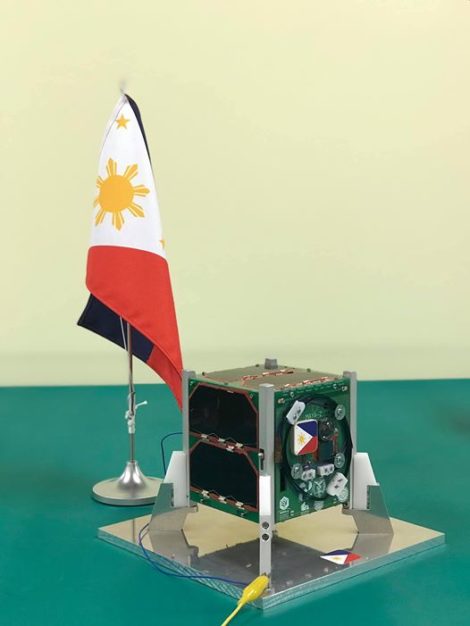
The Maya-2 Flight Model (Image: courtesy of BIRDS-4 Project)
Nearly after a month after it successfully launched into space, the Philippines’ second nanosatellite is now orbiting the Earth.
Maya-2, which was designed by three Filipino engineers, was sent to the International Space Station (ISS) on Feb. 21.
It launched to its targeted altitude in Low Earth Orbit from ISS on Sunday, March 14, at 7:20 p.m., as per the University of the Philippines (UP) Diliman Information Office on Monday, March 15.
Maya-2’s release was broadcast in a live stream from the Japan Aerospace Exploration Agency (JAXA) on Sunday.
Maya-2 was deployed into space with two other cube satellites (cubesats) from Paraguay and Japan. All three are part of Kyushu Institute of Technology’s (Kyutech) 4th Joint Global Multi-Nation Birds Satellite (BIRDS-4) Project.
Izrael Zenar C. Bautista, Mark Angelo C. Purio and Marloun Sejera are the Filipino engineers behind Maya-2. They are Kyutech scholars taking up doctoral degrees in space systems engineering and space engineering through funding from the Department of Science and Technology’s STAMINA4Space program.
Maya-2 engineers (from left) Mark Angelo Purio, Izrael Zenar Bautista and Marloun Sejera (Image: STAMINA4Space)
“The three cubesats will travel around the earth daily, primarily taking images of the earth and relay information such as weather station telemetry and emergency announcements in the area it may happen to be passing over,” UP Diliman said in its statement.
Data from Maya-2 will be gathered by the DOST-Advanced Science and Technology Institute in Quezon City.
Dr. Mengu Cho of Kyutech praised the Philippines’ efforts in its space program.
“After seeing the infant space programs in many countries, I can say that the Philippines is one of the best examples of a success story,” he was quoted as saying.
“For Maya-2, three students from the Philippines are engaged and play key roles in the entire BIRDS-4 project. I am sure that they can be an important asset to the future Philippine space program.” /ra
RELATED STORIES:
Second nanosatellite made by Filipinos launched to space
Scientists propose building ‘ark’ on moon to house millions of reproductive cell samples